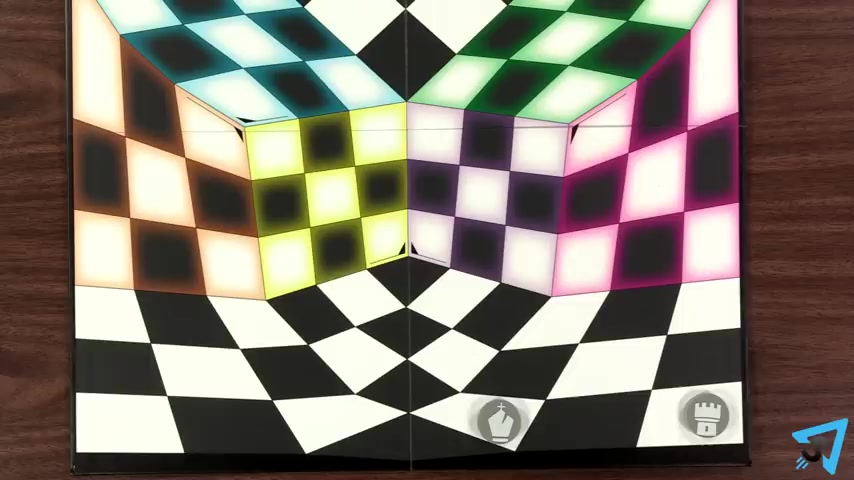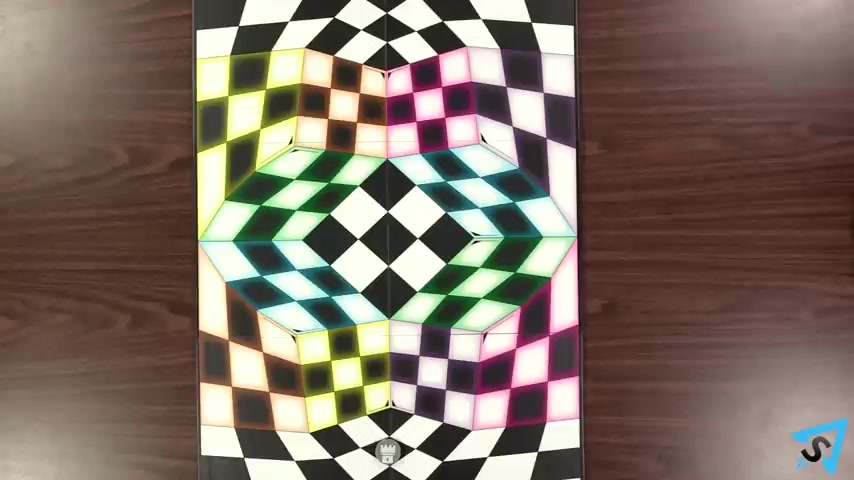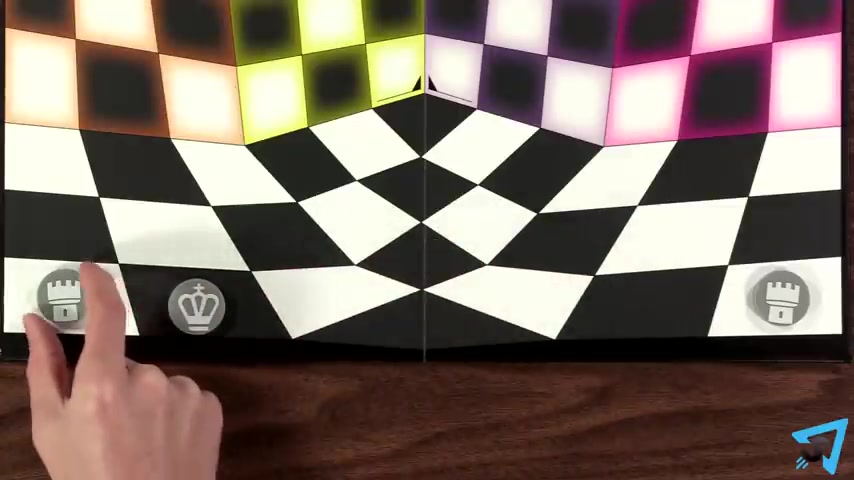https://www.youtube.com/watch?v=AlcE1Qy44uU
How to play 4D Illusion Chess

Four D illusion chess , how to play ?
The rules are the same as regular chess except for these changes for refresher of those rules , check out this video .
The object of the game is to capture your opponent's king .
There is no check or checkmate , lay out the board long ways between the two players .
Each space on the board is considered a square regardless of its perceived shape .
On your second row , set up nine ponds like so on your first row , set up rook knight , bishop , king , bishop , knight rook on your bottom most bonus square place your queen squares along the edges of the board are not diagonally connected to each other squares , not on the edge of the board are only diagonally connected to the corners of adjacent squares that are also not orally adjacent to it in certain locations .
This results in preventing further diagonal movement in a specific direction .

While in other cases , it allows for multiple diagonal movement options , movement across multiple squares must always be in a continuous straight line .
Though the perception of that line may curve , a straight line is considered moving across a square to the opposite line or corner from where you entered moves strung together .
This way are considered straight though they may curve across the board .
Colored squares are grouped into sets of nine with each set having a matching colored set on the other side of the board making a pair , each colored set is conjoined with its pair .
So that the two sets are considered a single set of nine squares .
Any piece to occupy a colored square actually occupies both colored squares in the same pair .
Simultaneously use the board to identify the correct orientation of the sets and add an extra identical piece marker to the square of the other set .

To indicate this a piece beginning its turn on a colored square can move from either of its conjoined locations on the board .
In a single move .
A piece may travel through colored squares like it traditionally would or it may travel through a colored squares conjoined location and continue in the same relative direction .
It was traveling .
You may not perform an infinite move nor return to the space that you started on .
When a piece on a colored square is captured , remove both copies of it from the board .
Ponds always move Ortho forward towards their opponents side of the board .
If a diagonal space is directly in front of it , then it may travel to either of the two Ortho forward spaces or capture forward right or left Passan is allowed like normal pawns promote like normal .
When reaching any of their opponents higher rank starting positions .

Castling is allowed like normal by moving the king two spaces towards the rook .
Then the rook to the other side , you may castle even if your king is threatened and you may castle through a threatened space .
Kings may move to a threatened space .
The first player to capture their opponent's king wins .
Are you looking for a way to reach a wider audience and get more views on your videos?
Our innovative video to text transcribing service can help you do just that.
We provide accurate transcriptions of your videos along with visual content that will help you attract new viewers and keep them engaged. Plus, our data analytics and ad campaign tools can help you monetize your content and maximize your revenue.
Let's partner up and take your video content to the next level!
Contact us today to learn more.